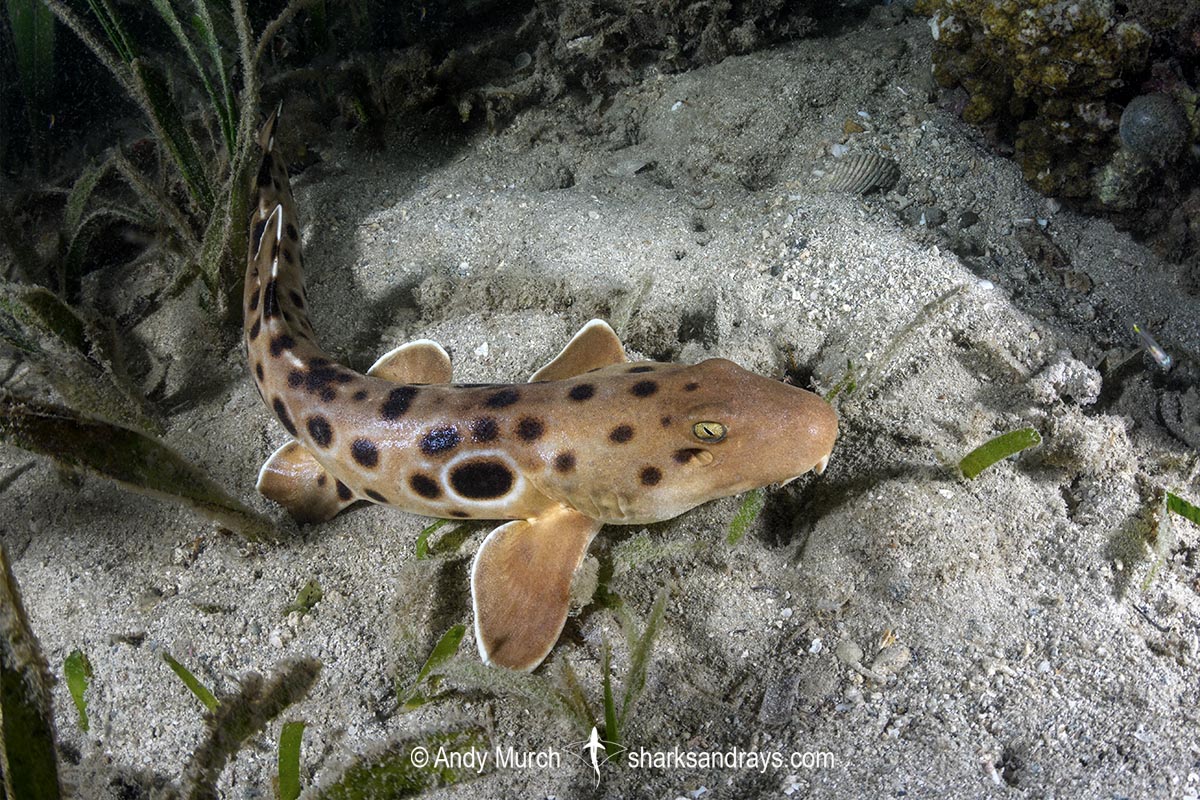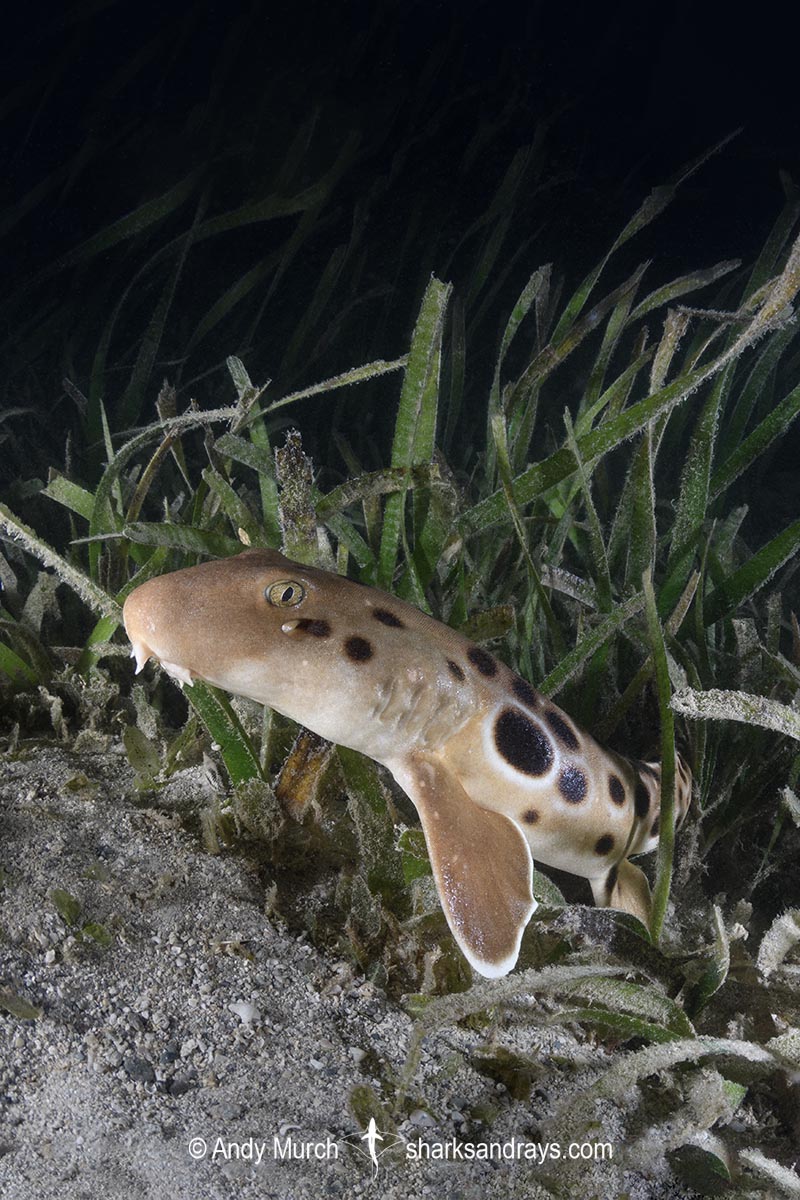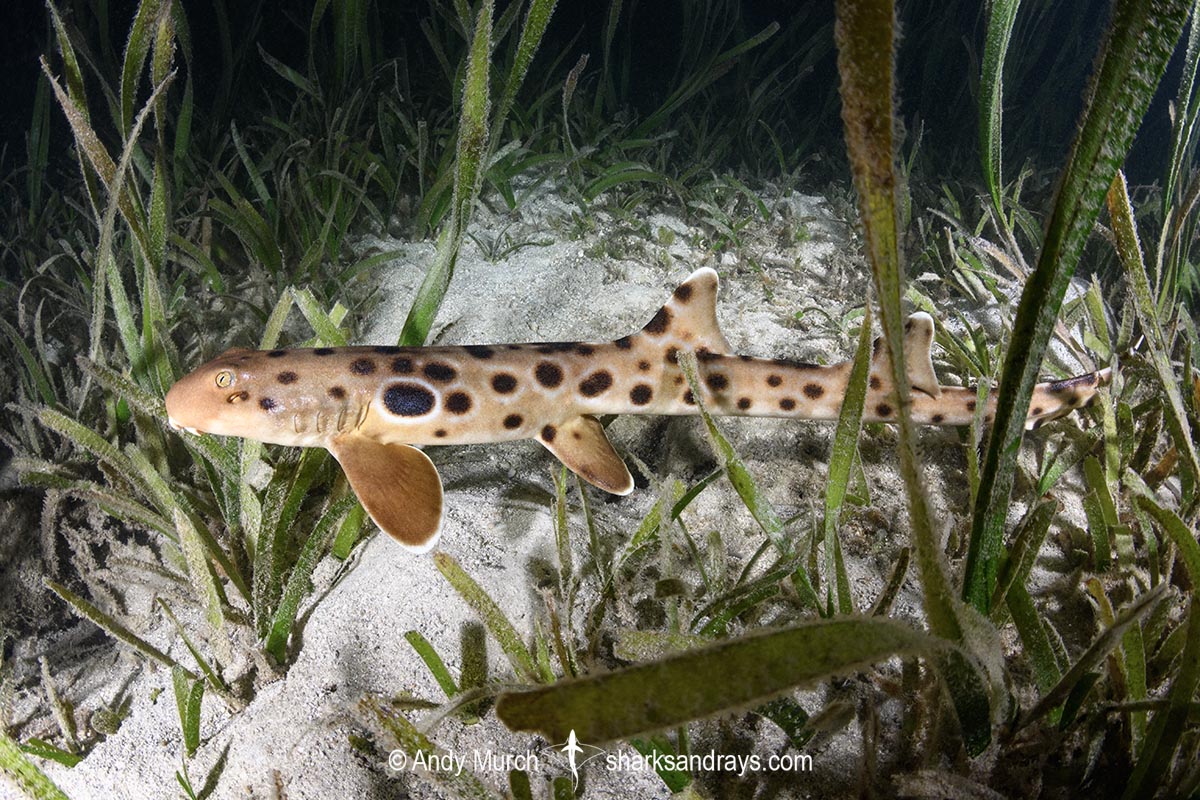Common names
Papuan Epaulette Shark.
Binomial
Hemiscyllium hallstromi.
Synonyms
None.
Identification
Elongated, slender body. Well developed pectoral and pelvic fins on fore-body (used partially for walking). Two equally sized dorsal fins on rear-body. Tail long and straight with upper and lower caudal lobes on underside. Sub-terminal notch present.
Dorsal coloration yellowish-brown with a pattern of large black ovoid spots (some encircled by pale rings) from nape to tail.
Large, well-defined, white-ringed, black ocelli above pectoral fins. Ventrum pale.
Size
Maximum size 77cm. Size at birth less than 19cm.

Conservation Status
VULNERABLE
The Papuan Epaulette Shark (Hemiscyllium hallstromi) is threatened from artisanal and industrial fishing, habitat loss from development in the Gulf of Papua, reef degradation due to climate change and dynamite fishing, and river-borne pollutants and sedimentation from mining run-off.

Habitat
Shallow tropical coral reefs, mangrove, and sea grass beds. From the intertidal zone to ~20m, on or near the bottom.
Distribution
Gulf of Papua. Records exist to the eastern tip of the PNG coast, but more common close to Port Moresby.
Reproduction
Oviparous. Reproductive cycle poorly known.
Diet
Unknown.
Behavior
Nocturnal. Rests by day in crevices on the reef or under corals. Actively forages at night on shallow reefs and in sea grass beds.
Reaction to divers
If not approached too closely, it is possible to watch this species in sea grass beds at night. Seeks cover if disturbed.
Diving logistics
Papuan epaulette sharks are easy to find during night dives on the house reef at Loloata Island, southeast of Port Moresby.
They are probably fairly common on most shallow reefs in Bootless Bay.
What’s new
View our full list of updates
Similar species
Epaulette Shark distinguished by smaller spots that start forward of the eyes, and geographic range; Australian endemic.




